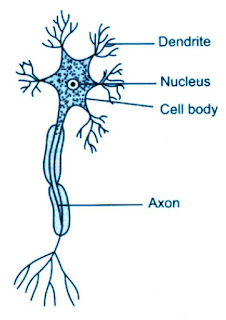Acids Bases and Salts Class 10 CBSE
Acids Bases and Salts Class 10 CBSE
What is a salt?
A salt is a compound formed by the replacement of hydrogen ions of an acid, partly or wholly by a metal or ammonium ion. Example sodium chloride, calcium sulphate etc.
Again salts is formed by acid base neutralisation reaction. Such as sodium chloride (Nacl) is formed due to neutralisation reaction between sodium hydroxide (NaOH) and hydrochloric acid (Hcl).A salt has two part, first parts name come from the base and the second part is come from the acid. Such sodium chloride (Nacl), the first part that is sodium come from sodium hydroxide (NaOH) and the second part come from acid that is hydrochloric acid (Hcl).
There are different types of salts such chlorides ( which are derived from hydrochloric acid), sulphates (which are derived from sulphuric acid), nitrates (which are derived from nitric acid), carbonates (which are derided from carbonic acid) etc.
The pH of aqueous solution of salts may be greater then, less then or equal to 7.
(i) when the salt is formed from strong base and weak acid then the pH of its aqueous solution is greater then 7 that is alkaline in nature.
(ii) when the salt is formed form strong acid and weak base the pH of the aqueous solution is less then 7 that is solution in acidic.
(iii) when the salt formed from strong acid and strong base or weak acid and weak base then the pH of this solution is equal to 7 that is neutral.
Common Salt: Its chemical name is sodium chloride (Nacl) It is a neutral salt.
It can be formed from sodium hydroxide and hydrochloric acid.
NaOH + Hcl = Nacl + H2O
It is used in cooking food, as preservative, to manufacture soap.
Washing Soda: Its chemical name is sodium carbonate decahydrate and chemical formula is Na2CO3, 10H2O. It contain ten water molecules.
When we heat washing soda, water molecules is removed out and its crystal structure is converted into powdery form. It is called anhydrous sodium carbonate. This anhydrous also called soda ash.
Washing soda is crystalline solid, its aqueous solution is alkaline and it has cleansing property.
Use Salt (washing soda): This salt used as detergent, to reduce of water, manufacture of glass.
Baking Soda: Chemical name sodium hydrogencarbonate and its formula NaHCO3.
This White salt is sparingly soluble in water, alkaline in nature and on heating, salts breaks down to form carbondioxide and sodium carbonate salt and water.
It is used as antacid, to make baking power, used in fire extinguisher.
Bleaching Power: Its chemical name is calcium chloro-hypochloride or calcium oxychloride and its formula is Ca(Ocl)cl or CaOcl2.
This strong smell salt sparingly soluble in water and reacts with acid to produce chlorine.
It is used to bleach cotton and linen fabric, disinfecting drinking water, manufacture chloroform.
Plaster of Paris: Chemical name calcium sulphate hemi hydrate and formula is CaSO4. 1/2 H2O. It is also noted as POP.
Plaster of Paris used in hospital for setting fractured bones, making toys and statue, as a fire-proofing material.
Plaster of Paris is always stored in moisture proof container otherwise on contact of moisture present in air it become hard.
Water of Crystallisation: Hydrated Salts:
The water molecules which form part of the structure of a crystal (of a salt) are called water of crystallisation.
The salts which contain water of crystallisation are called hydrated salts.
As for example, CuSo4. 5 H2O has water of crystallisation 5 and it is a hydrated salt.
When we heated these hydrated salt, their water molecules are removed and their crystal structure destroy and becomes powdery.
When we added water to these anhydrous salt, again they become crystalline and gain its previous colour also.
Acids Bases and Salts Class 10 CBSE

